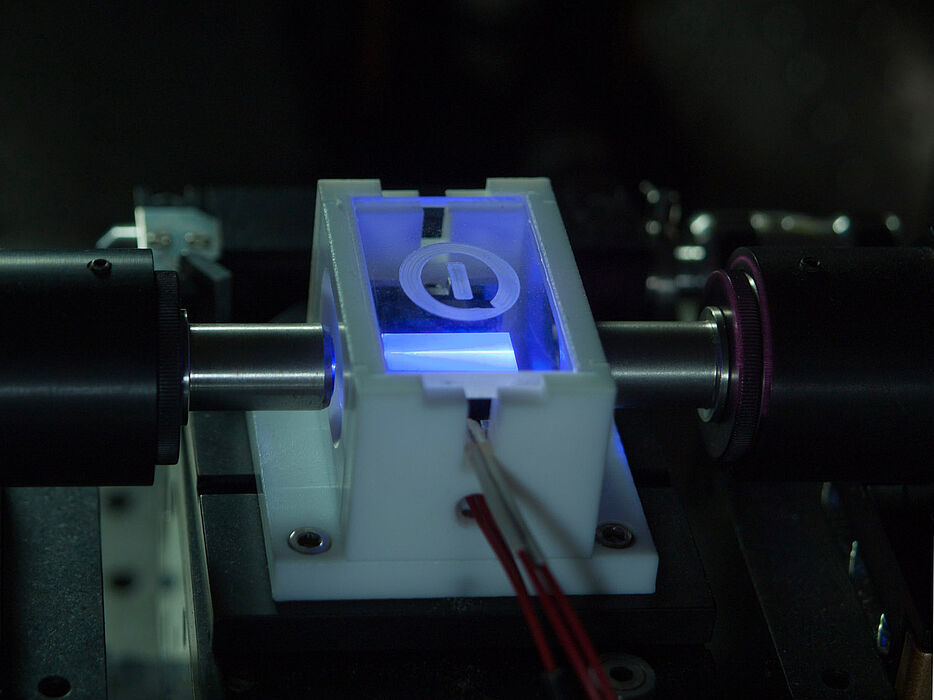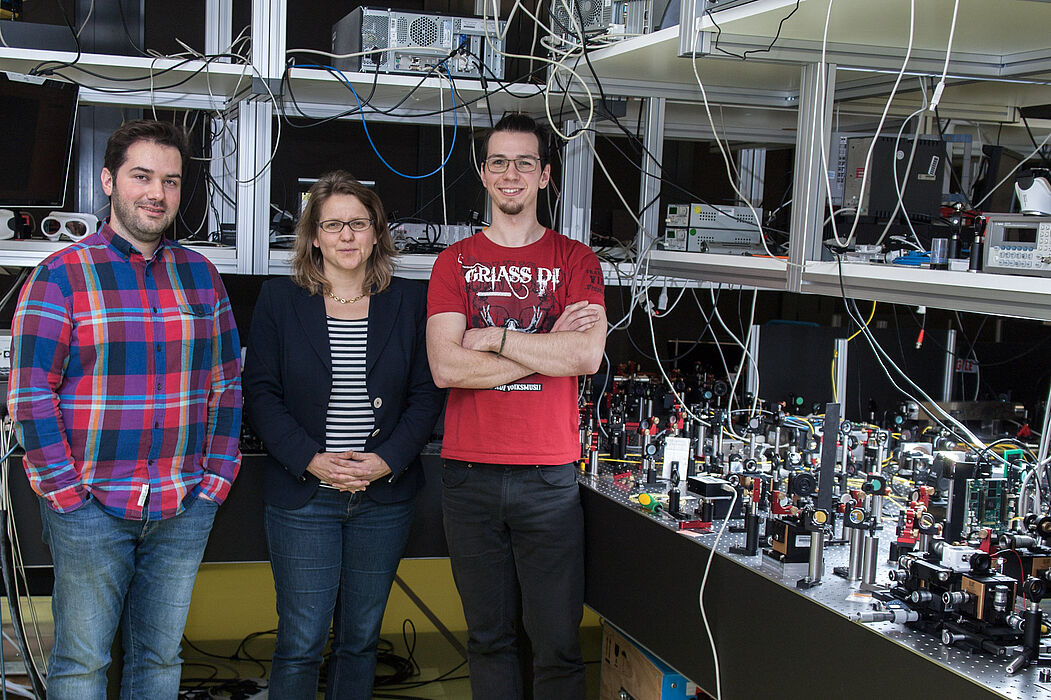Prof. Dr. Christine Silberhorn and her team (University of Paderborn) recently demonstrated the first device that combines frequency conversion with high efficiency and bandwidth compression of single photons. The device, which is based on non-linear waveguides in Lithium Niobate manufactured in the group in Paderborn, allows to adapt photons from sources in the telecom range to atomic systems in the visible and near-infrared spectrum, paving the way to connect quantum memories, low-loss optical fibers and single photon sources into one hybrid quantum networks.
“Our device is an important step for the realization of hybrid quantum networks. Highly efficient interfaces between dissimilar components of the network is key for the future development of quantum communication systems. This requires a sophisticated technology which takes into account equally quantum physics and tailored engineering of high permormance waveguides.“ explains Prof. Silberhorn.
The process relies on matching the velocities at which pulses of light at different wavelength travel through the material. This group-velocity matching is achieved by counteracting the material dispersion with its birefringence – an approach pioneered by Christine Silberhorn's group. One difficulty in realising the device lies in combining very homogeneous waveguides with the inversion of crystal domains on very a short length scale. While other groups have demonstrated bandwidth compression and frequency conversion before, none of them could reach the efficiency necessary to compete with a spectral filter, which are much simpler but lossy.
The research was published in “Nature Communications” on January, 30th and is available for open access here.
Prof. Dr. Silberhorn is the head of the “Integrated Quantum Optics” group at the University of Paderborn. She is principal investigator of the project “Direct measurement of time-frequency shaped ultrafast quantum pulses from parametric downconversion and upconversion processes” within the SFB TRR 142.


